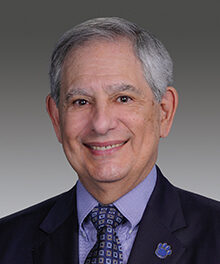
As healthcare has continued to expand as a portion of the U.S. economy, the degree of fraud and other inappropriate actions seems to be increasing, almost exponentially. When the Office of Inspector General of the Department of Health and Human Services (OIG/HHS) believes there is fraudulent or other proscribed activity by one or more healthcare entities, performs an investigation, and the healthcare provider seeks to settle the matter without litigation, OIG may enter into an agreement, referred to as a Corporate Integrity Agreement or CIA. OIG negotiates CIAs with healthcare providers and other entities as part of the settlement of federal healthcare program investigations arising under a variety of civil false claims statutes. Providers or entities agree to the obligations, and in exchange, OIG agrees not to seek their exclusion from participation in Medicare, Medicaid, or other Federal health-care programs1. Many of the CIAs also have a simultaneous settlement agreement with the U.S. Department of Justice (DOJ) avoiding criminal prosecution.
CIAs have many common elements, but each one addresses the specific facts at issue and often attempts to accommodate and recognize many of the elements of preexisting voluntary compliance programs. A comprehensive CIA typically lasts five years and includes requirements to:
- Hire a compliance officer/appoint a compliance committee;
- Develop written standards and policies;
- Implement a comprehensive employee training program;
- Retain an independent review organization to conduct annual reviews;
- Establish a confidential disclosure program;
- Restrict employment of ineligible persons;
- Report overpayments, reportable events, and ongoing investigations/legal proceedings; and
- Provide an implementation report and annual reports to OIG on the status of the entity’s compliance activities.
Some of the many areas where a CIA has been used or required (required in that, otherwise, the OIG and/or DOJ likely would go forward with formal civil or criminal charges and a move to exclude the provider from the Medicare and Medicaid systems, temporarily or permanently), include individual and group medical practices, hospitals, and skilled nursing facilities. In addition, pharmaceutical manufacturers, which accounted for approximately 6% of the 652 entities that entered into CIAs between July 2005 and July 2017, accounted for approximately 62% of the settlement amounts owed to DOJ by these entities.
Issues that may lead to an investigation by OIG and, ultimately a CIA, include agreements between physician groups that violate the anti-kickback and Stark regulations; payment of amounts that are not fair market value, or are not deemed commercially reasonable, between hospitals, or other healthcare entities; and physicians or others in transaction to buy, sell or lease the services of a business or practice. Many of the pharmaceutical CIAs relate to arrangements between a pharmaceutical manufacturer and physicians or other healthcare entities that are deemed the payment of something of value in exchange, directly or indirectly, for referrals of Medicare or Medicaid patients. Most of the pharmaceutical settlements associated with HHS-OIG agreements were qui tam2 cases (31 of 37 agreements), and a third of all qui tam settlement amounts were associated with just four pharmaceutical qui tam cases. CIAs also relate to mislabeling or other marketing issues that violate FDA or other requirements or prohibitions.
Examples of settled or pending qui tam matters:
- A radiology company settled with OIG on a claim that procedures were performed without appropriate physician supervision and that the radiology entity entered into “sham” medical director agreements to influence referrals of additional radiologic procedures with a contrast material.
- An oncology group was alleged to have entered into an agreement with a home health agency to provide services at below market value in exchange for exclusive or preferred provider status, resulting in additional referral business.
- A hospital system was alleged to have entered into multiple medical director agreements, in excess of the needed services, as part of a purchase of physician practices, in order to induce referrals of patients to hospital in-patient and diagnostic services.
Best practices include obtaining an independent fair market value opinion for arrangements between healthcare entities where referrals of federally insured patients may occur. Physician compensation and bonuses, leasing of physician practices or physician services, or use of office space, in whole or in part, are also areas that should be reviewed to provide an appropriate defense in the event OIG were to question the terms of an arrangement, and these should be reviewed with legal counsel, in advance of the execution of the agreement.
According to OIG-HHS, most entities comply with their agreements. When there is non-compliance, OIG-HHS takes escalating steps to address the issue, including working with the entity to request additional information regarding the non-compliance and potentially excluding the entity from participation in federal healthcare programs. HHS-OIG also has the option to demand that an entity pay stipulated penalties as set forth in the agreement and/or send the entity a letter of material breach of the agreement for, among other things, failure to respond to a stipulated penalties demand letter, repeated and flagrant violations of the agreement, or failure to notify OIG-HHS of reportable events.
Resources
1. OIG Web site
2. Qui Tam cases are brought by a so-called “whistle blower” on behalf of the government and, if settled, the whistle blower will be entitled to receive a portion of the government’s recovery. Qui Tam is short for a Latin phrase meaning in the name of the King. The individual(s) filing the claim are referred to as a “relator”.



















